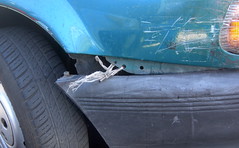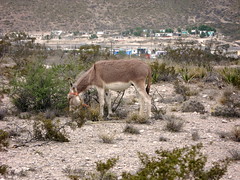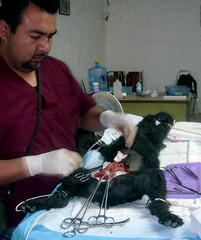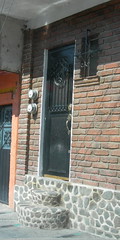Thursday, April 4, 2013
Monday, February 4, 2013
Friday, August 24, 2012
Only in Mexico!
Notice the power pole ascending directly through the building (inside the living room upstairs) and out the roof? I presume the building was built around the pole, but then, this is Mexico, so who knows . . .
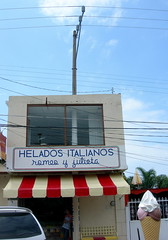
Further down in this section on Mexican Moments you will find another photo along these lines.

Further down in this section on Mexican Moments you will find another photo along these lines.
Posted by Paty at 1:12 PM 0 comments
Labels: Mexican Moments
Thursday, March 8, 2012
. . . see that doggie in the window
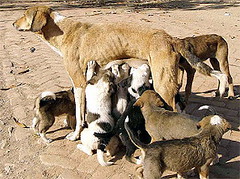
Since I moved to Mexico 6 1/2 years ago I have sought out and found several opportunities to serve the local Mexican population. I was on the advisory board of the Ajijic Women's Co-op for a couple of years. In addition to lending my advice on business practices I was in charge of the micro-loan program.
Last year in February, my friend Susy and I started a program called "Old Ladies Helping Old Ladies". We collect donations monthly from our friends and acquaintances of money, clothing, household items that aren't wanted, etc. to give to Casa Corazon, the homeless women's shelter in a neighboring village. Our goal is to provide funds to run the shelter and pay for a meal served on Saturdays to about 50 homeless (or inadequately housed) Mexicans.
As the homeless in the US, these women only show up when they need a shower or it's raining or cold outside, and of course for the Saturday meal. Unless I go out to the shelter on Saturdays to help with the meal prep, I don't see a lot of results of the work I do. It's very slow progress to make a positive change.
Recently I heard that there was going to be a 3-day, free spay and neuter clinic in another neighboring village. I signed up as a volunteer to do anything that needed doing. My Spanish is composed of phrases and sign language as I can't string a lot of sentences together quickly. So for two of the three days I worked in the surgical area, which is right up my alley.
The little village of Santa Cruz let us use the local meeting building and even hooked up additional electrical plug-ins dropped from the tin ceiling. And the local women provided lunch for us too--not that we had much time to eat or even stop for bathroom breaks.
We had two vets in from Mexico City as well as several local vets from the Lakeside area and Guadalajara give of their time. Donations collected ahead of time paid for most of the materials needed such as tranquilizers, anesthesia, antibiotics, suture material. The county government kicked in hotel and meals for the visiting vets as well as some material. The rest of the material needed like tarps covering the cement floor, plastic to cover the surgical tables, towels/newspapers/cardboard for the recovery area, exam gloves and a whole host of other items were donated by the community or the working volunteers. It's amazing how much stuff is needed just to cut off testicles!! (No jokes about two bricks).
We opened the doors at 8 am to a crowd of people and pets. By the time the last animal was awake and on it's way home the time was mas o menos 6 pm. Then the clean up began to be ready for the next day.
This is the intake area--owners with their dogs and cats. Surprisingly, we had few problems with the interaction of animals. Although, we did have to muzzle a few dogs as they were aggressive to either us or other dogs. In this area a form was completed showing the owner's name, address, dog's name and age/sex. A strong vet student then stood on a digital bathroom scale with the pet in his arms to weigh each animal for Dr. Bob (our local, retired US vet) to calculate anesthesia.
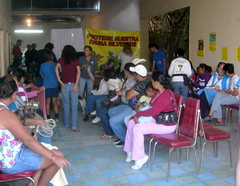
This is the prep area where pets were given a short-term tranquilizer. When the animals were asleep their foreleg was shaved. Two animals at a time could be worked on.
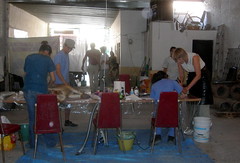
Dr. Bob (in the red shirt and hat)then injected anesthesia into a vein. When the animal was fully asleep the area to be surgerized was then shaved by vet students from Guadalajara and a small vacuum was used to pick up the hair. Disinfectant was then used to clean the area. When a surgery table was free they were transfered to the surgical area.

Here Dr. Abram from Mexico City is spaying a female dog. The organs of dogs and cats are nothing like a human. Animals reproductive organs are more like a long tube in the shape of a "U" with an ovary at each end. The babies are lined up all along the tube (we had a few pregnant animals). The uterus veins, arteries and vagina were tied off, cut, then the organ was removed. The abdominal muscle was then sutured followed by closure of the skin with sutures. They are cleaned of any blood, sprayed with a disinfectant and moved to the recovery table.
With males it's much less involved. A very small slit is made in the scrotum (if a small animal) or at the base of the scrotum. The testicles are then squeezed and pop up through the slit (I know this sounds horrible but because testicles are soooo slippery, it really is the best way, and results in less trauma to the area and less post-op pain to the animal than digging around in there). The connective tissue is retracted, the veins, arteries and tube to the prostrate is tied off before being cut and the testicles are removed. If the slit is in the scrotum there is no suture required--just a spray of disinfectant and they go to the recovery area. If the surgical opening is just ahead of the scrotum, then sutures are placed, disinfectant sprayed and they are off to recovery.
Because male animals were easier and quicker to neuter, I really preferred to see them come in. That way we could see more animals in a day and affect the animal population even more. Surprisingly, there were actually a few men who brought in their males--but mostly it was the women who brought in the animals.
This is the recovery area where the critters were given an antibiotic shot and tattooed on the inside of their rear leg. This was done to identify that they had been neutered for any future vet's information.
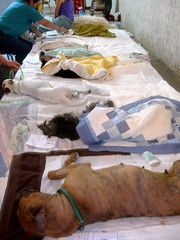
Sometimes, when everything was running very smoothly in each area, we would have 12 animals recovering together. We tried not to put the sleepy cats next to the dogs that were waking up. Dogs wake up pretty quickly like 1/2 -- 1 hour after surgery, but cats take much longer. We had one young cat that was still asleep after 4 hours. We had to rub her vigorously and I ended up carrying her and jiggling her while working the surgical area one-handed. But that was how everyone seemed to be working. We helped each other and worked as a pretty good team.
We even had one local vet who would carry his animal to recovery, clean up his own table and plop his used instruments into the sterilizing tub (nice when two of us were sometimes aiding 5 vets and helping in recovery). He was a fast surgeon and a heck of a nice guy--I'd welcome him back any time!
We also grabbed a few street dogs if they came into the reception area to visit the other dogs. One was a very skinny, little mutt with toenails about 1-1/2 inches long that had curled back into his pads. He had evidently, at one time, been kept in a very small enclosure or tied up on a short rope and wasn't able to keep his nails worn down. His feet were infected and swollen; he hobbled along the street looking for something to eat. Dr. Bob gave him anesthesia to cut his toenails, we neutered him and pumped him full of antibiotics. One of the volunteer ladies took him home to fatten him up, clean him up and socialize him with her dogs. I called her yesterday and he is doing much better and will make someone a good pet when he's put up for adoption.
When everything was totaled up, we had sterilized 175 animals over three days with the majority of them being done by the two visiting vets. No wonder we all went home too tired to eat and fell in bed exhausted.
This was, by far, the most gratifying volunteering I've done since living here. Our work is effecting not only the lives of the pets we saw, but also the lives of the owners. No more baby dogs or cats to feed when it's sometimes difficult to feed the kids. The dogs will be less aggressive, no roaming the town to get hit by a car or out of control donkey cart and they will be healthier.
What a great opportunity I was given to be of help. I plan to work the next clinic planned for this summer. I only hope I survive it!
Posted by Paty at 8:37 AM 0 comments
Labels: This and That
Saturday, January 28, 2012
What ARE we doing . . . . . . ?
I have been following a wonderful blog for the past year or so--http://sprinterlife.com/. I was especially moved by a recent post, so I asked permission to lift it in it's entirety and repost here. This is NOT an original post by me!
Pacific Ocean Trash Vortex
I’ve been wanting to write this post for a while. Recently a lot of people on Facebook posted photos about this issue, so I figured it was a good time to build on the inertia.
Please reshare this post on Facebook so we can spread the awareness of this problem.
After arriving in Huanchaco 4 months ago I noticed that every day the ocean would wash up enormous amounts of plastic garbage onto the beach. Every day local workers would show up to clean the tourist beach, but the north and south remained littered with debris. It was clear to me that this waste was coming from out at sea, but why? And where was the source?
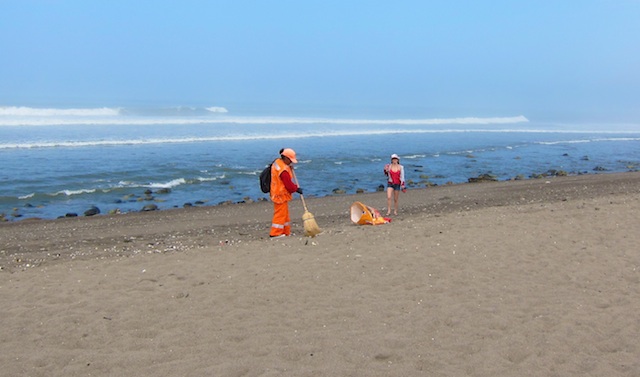
After doing some research I discovered that our Pacific Ocean is in serious trouble. The problem was much worse than I could have possibly imagined. That got me wondering how many other people know about this? So here is what I found when I looked under the covers…
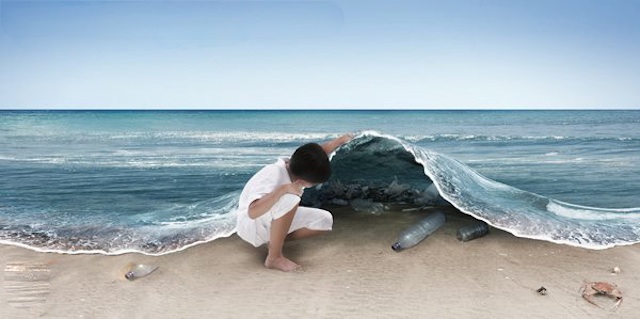
There is a “plastic soup” of waste floating in the Pacific Ocean and it is growing at an alarming rate. Maybe you heard it was the size of Texas? Yes, it was at one point. But now scientists believe it covers an area twice the size of the continental United States, and is still growing.
The vast expanse of debris – in effect the world’s largest rubbish dump – is held in place by swirling underwater currents. This drifting “soup” stretches from about 500 nautical miles off the Californian coast, across the northern Pacific, past Hawaii and almost as far as Japan.
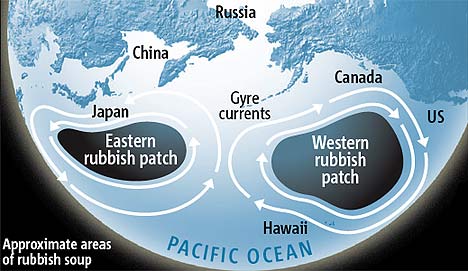
Charles Moore, a former sailor, came across the sea of waste by chance in 1997, while taking a short cut home from a Los Angeles to Hawaii yacht race. He had steered his craft into the “North Pacific gyre” – a vortex where the ocean circulates slowly because of little wind and extreme high pressure systems. Usually sailors avoid it.
He was astonished to find himself surrounded by rubbish, day after day, thousands of miles from land. “Every time I came on deck, there was trash floating by,” he said in an interview. “How could we have fouled such a huge area?”
Mr Moore, the heir to a family fortune from the oil industry, subsequently sold his business interests and became an environmental activist. Back then he warned that unless consumers cut back on their use of disposable plastics, the plastic stew would double in size over the next decade. It’s far exceeded that prediction.
Most debris consists of small plastic particles suspended at or just below the surface, making it impossible to detect by aircraft or satellite. Instead, the size of the patch is determined by sampling.
The “soup” is actually two linked areas, on either side of the islands of Hawaii, known as the Western and Eastern Pacific Garbage Patches.
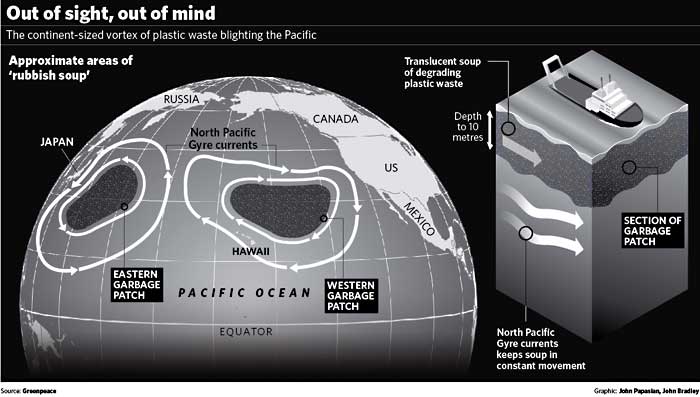
The Garbage Patch formed gradually as a result of marine pollution gathered by oceanic currents. The gyre’s rotational pattern draws in waste material from across the North Pacific Ocean. As material is captured in the currents, wind-driven surface currents gradually move floating debris toward the center, trapping it in the region.

So what are the sources of pollutants:
In a nutshell, we are the source.
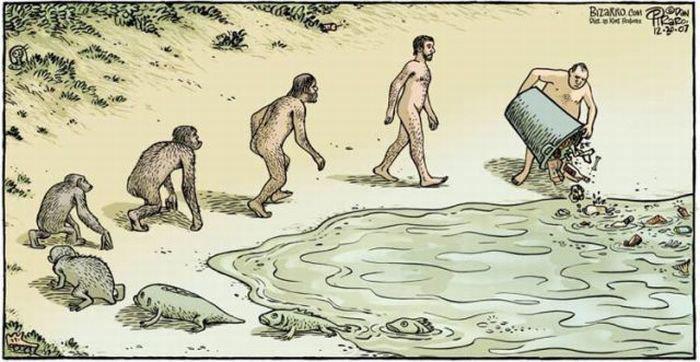
About 20% of the junk is thrown off ships or oil platforms. Ship-generated pollution is a source of concern, since a typical 3,000-passenger cruise ship produces over eight tons of waste weekly, a major amount of which ends up in the patch.
The other 80% of the garbage comes from land-based sources.
Rivers carry garbage out to sea, which then makes its way into the patch. Currents carry debris from the west coast of North America to the gyre in about six years, and debris from the east coast of Asia in a year or less.
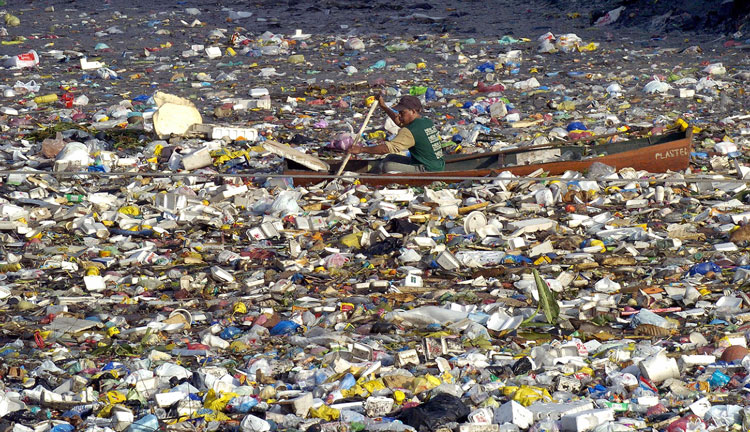
Pollutants range in size from abandoned fishing nets to micro-pellets used in abrasive cleaners and includes everything from footballs to kayaks to Lego blocks and carrier bags. Plastic cans, bottles, toys, bags, cups, balls… you get the picture.
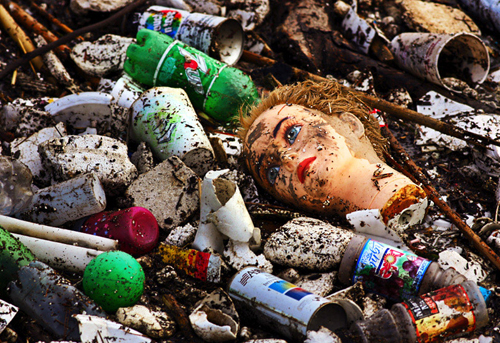
You name it, and it’s in there…

The biggest problem is our addiction to plastic.
According to National Geographic, more than 200 million tones of plastic are produced each year, of which about 10% ends up in the oceans. And once plastic is made, it NEVER breaks down.


All of this plastic in the ocean is having a devastating effect on Marine life.
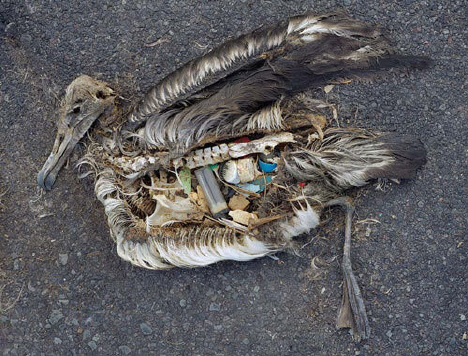
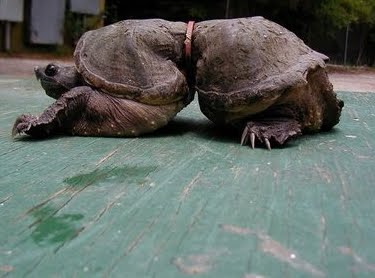
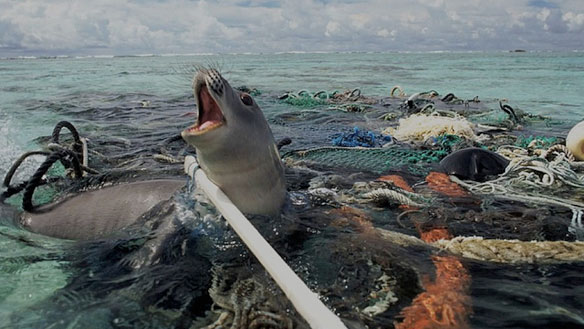
This statistic is grim—for marine animals, of course, but even more so for humans. Why? Because just like the marine life, we’re now ingesting plastic toxins constantly.
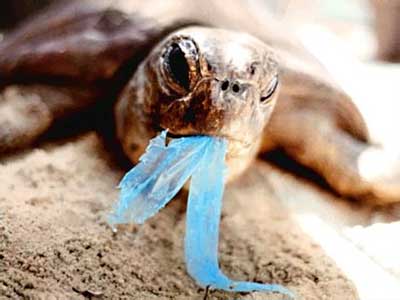
Plastic has made it’s way into the food chain.
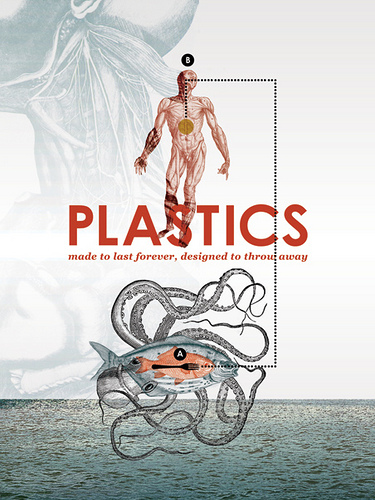
All sea creatures, from the largest to the microscopic organisms, are, at one point or another, swallowing the seawater soup instilled with toxic chemicals from plastic decomposition. The world population is eating fish that have eaten other fish, which have eaten toxin-saturated plastics. In essence, humans are eating their own waste.
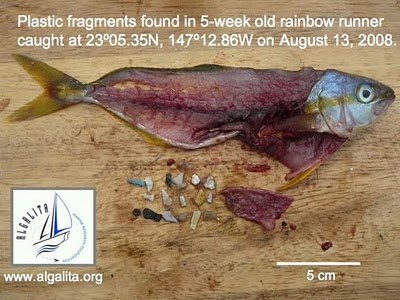

Facts:
267 marine species are affected by plastic garbage already.
All sea creatures are threatened by floating plastic, from whales down to zooplankton.
We are the last in the food chain, and we are definitely experiencing the consequences of our actions.
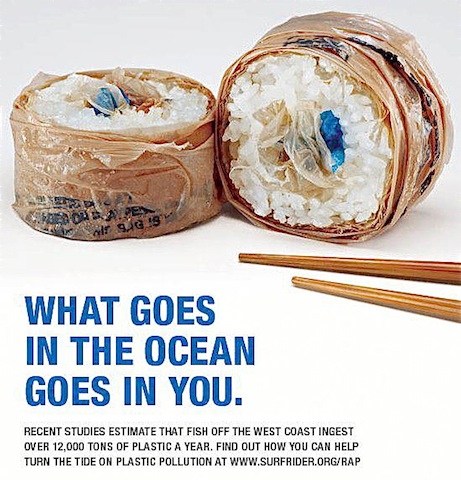
You could take your blood serum to a lab right now, and they’d find at least 100 industrial chemicals (INSIDE OF YOU) that did not exist in 1950.
If that doesn’t deeply disturb you, then you have your head buried in the plastic.
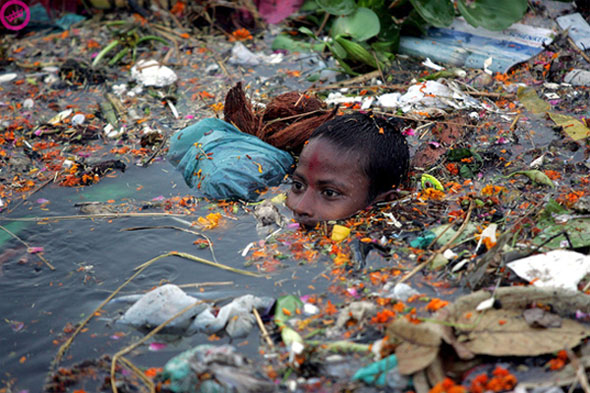
What we can do:
As sad as it is, this is such a monstrous problem that it will be very hard to stop and reverse the damage. Our world is addicted to plastic. But here is what you can do to try and help.
1) Although recycling makes only a small impact, everyone should do it, period. And more importantly, we need to push for and support more robust recycling programs, because right now they are pathetic.
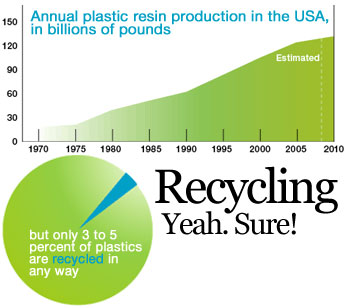
2) Stop using plastic. That’s the only way we can eliminate all the toxic products that harm the animals and us human beings. This is clearly easier said than done. Not using plastic is currently impossible, but each person CAN reduce plastic use.
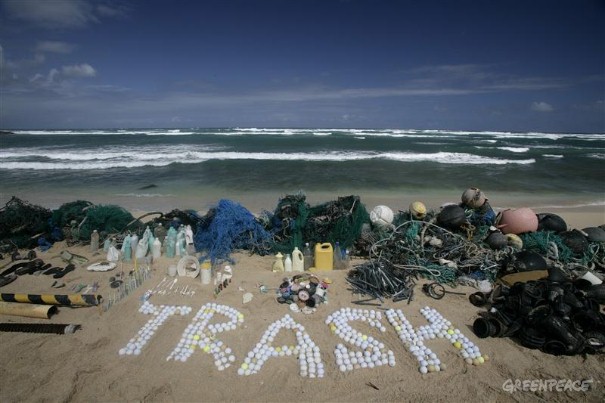
To make the biggest impact, minimize your consumption of bottled water, bottled soda, and plastic bags.
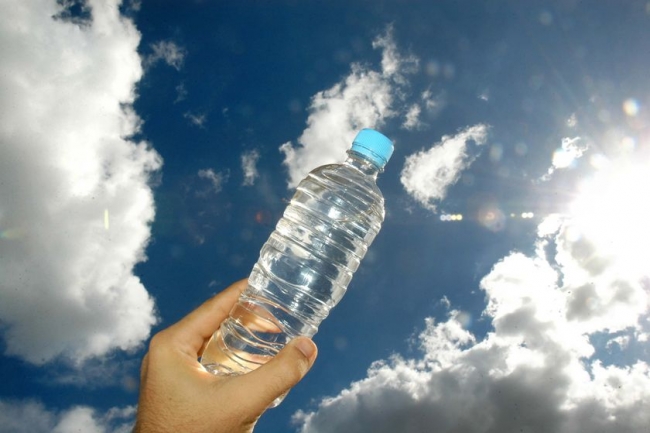
3) The BIGGEST thing we can do to help this problem is make the transition to biodegradable plastics. Biodegradable plastics will decompose in natural aerobic (composting) and anaerobic (landfill) environments.
The biggest challenge here will be getting the plastic companies like Dupont to transition tobiodegradable plastics. That is about as challenging as trying to get the oil companies to pursue clean fuel alternatives.
As with many of the problems of our day, this one seems hopeless. I hate to leave a blog post in a pessimistic light, but to be honest with you, I am losing faith that enough people will evolve the consciousness required to fix these problems fast enough to make a difference.
Let’s hope I’m wrong.
TREE
Some interesting links:
Some good videos:
Posted by Paty at 1:53 PM 0 comments
Labels: This and That
Sunday, June 26, 2011
What Architect?
I can't imagine how this front door was designed to be so far from the sidewalk. And then need such tall, skinny steps to reach the door threshold. The architect (yeah right) who designed this house obviously didn't measure correctly in order to get the floor of the house even close to level with the sidewalk.
Posted by Paty at 9:50 AM 0 comments
Labels: Mexican Moments
Sunday, April 17, 2011
Have Chop Shop, Will Travel
I came home from breakfast and the old blue car that had been sitting across the street for months, without moving, was being taken apart by two industrious men. The car couldn't be driven to the junkyard and a towing fee was out of the question, so the "chop" guys came to the car. By mid-afternoon, this was what the skeleton looked like.

Working with nothing more than a small crowbar, a mallet, a hacksaw and a sledge hammer, by evening all that was left sitting on the street were the two ripped up seats. Everything else had been carted away in pieces.

Working with nothing more than a small crowbar, a mallet, a hacksaw and a sledge hammer, by evening all that was left sitting on the street were the two ripped up seats. Everything else had been carted away in pieces.
Posted by Paty at 4:48 PM 0 comments
Labels: Mexican Moments
Subscribe to:
Posts (Atom)

